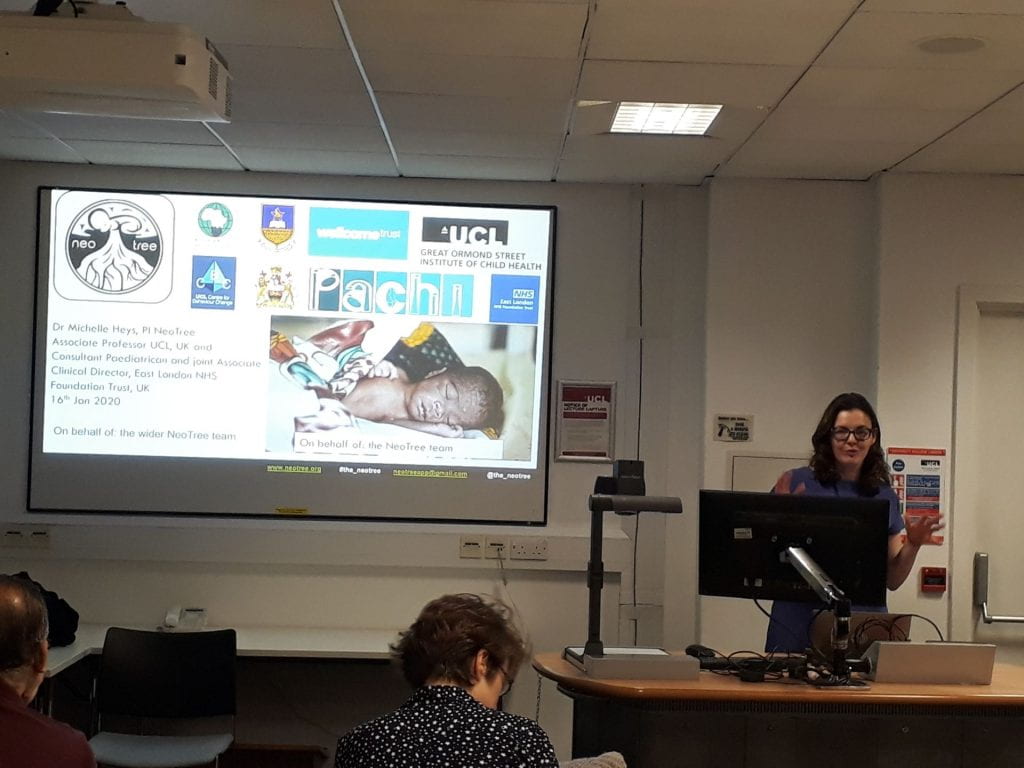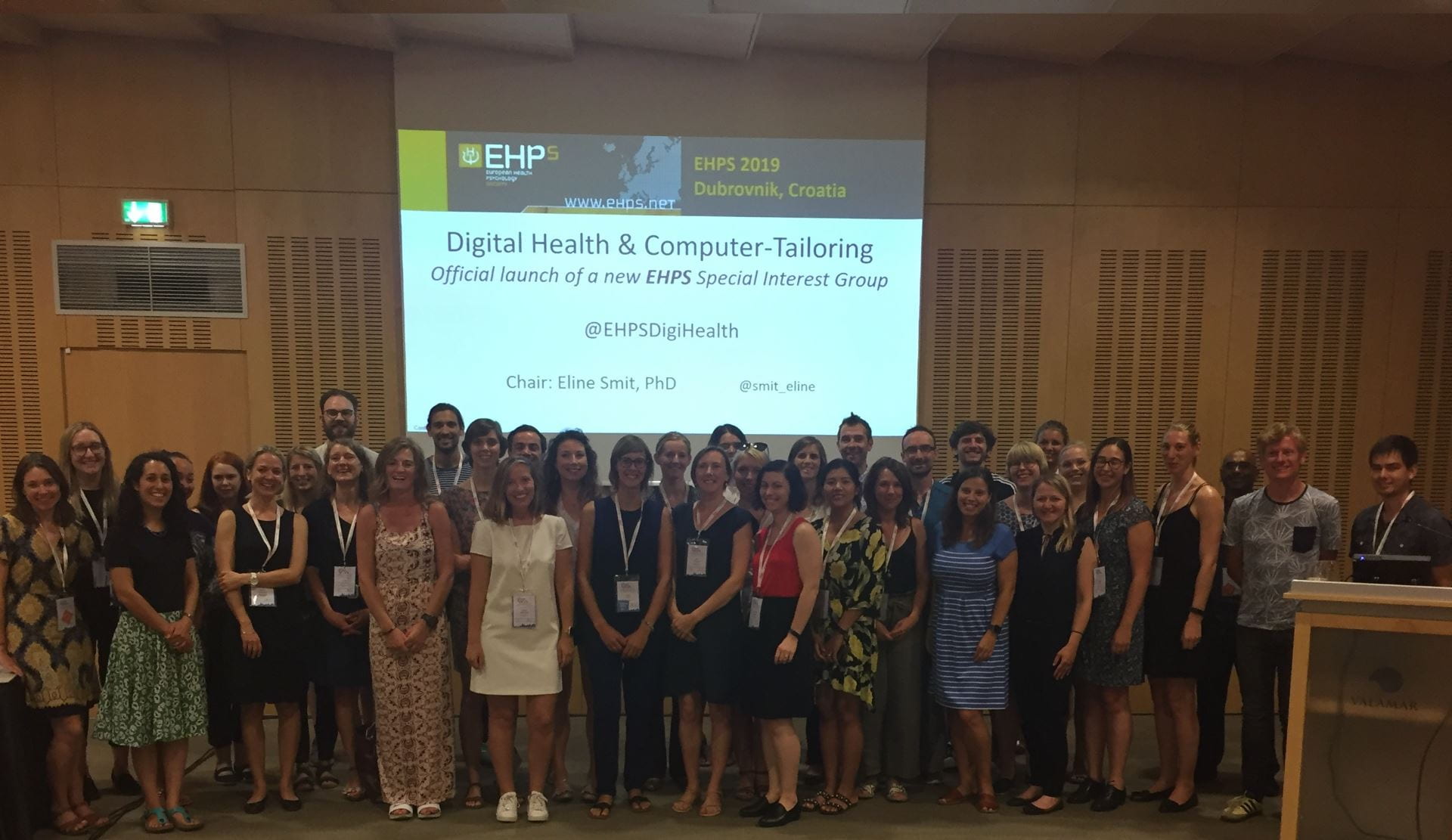UCL IHE TechSharing Seminar Series – Global Digital Health
By CBC Digi-Hub Blog, on 18 February 2020
The UCL TechSharing Seminar Series aims to foster knowledge exchange between academics, clinicians, policy makers and industry professionals working at the intersection of healthcare and digital technologies. The first seminar in the 2020 iteration of the series (supported by the UCL Institute of Healthcare Engineering) took place on January 16th and was hosted in collaboration with the London School of Hygiene and Tropical Medicine (LSHTM). The seminar focused on healthcare delivery (e.g. point of care diagnostics, clinical decision-making, remote data collection) via smartphone apps and related technologies in low resource settings. Four speakers provided fascinating insights into the opportunities and challenges of conducting digital health research in a global context. A number of important lessons were highlighted across the presentations, summarised below.
The next seminar in the series will focus on ethics in multidisciplinary digital health collaborations (date TBD).
***
In his keynote presentation, Dr Andrew Bastawrous talked about his journey to setting up PeekVision – an organisation which uses smartphone technology and related software to support eye testing and care in remote locations. While cost-effective solutions are available (e.g. glasses, cataract surgery), accessibility issues mean that millions of people in need of eye care are not catered for. Dr Bastawrous drew on his personal and clinical experiences to demonstrate how a technology like PeekVision can help meet such healthcare needs. He talked about how the ideas behind the project evolved, starting from early, logistically cumbersome population-based research (e.g. screening programmes) which required the transport of costly NHS diagnostic equipment to remote and poorly connected areas in sub-Saharan Africa, to projects involving teacher-led and smartphone-enabled eye tests. Peek Vision’s story highlights the importance of adapting to the local context, engaging a wide range of community members (e.g. parents, headmasters, teachers) and seizing unexpected opportunities – in communities where access to running water, high quality roads, or electricity is limited, the majority of people might still have access to mobile phones.
Lessons learnt: (1) without diligent and transparent data collection and analysis at each stage of the project, it would not have had the same impact, as the data collected allowed the project team to identify areas for improvement; (2) simple solutions are often preferable to complex ones, such as using a piece of string (as opposed to sophisticated algorithms) to measure the right distance for conducting smartphone-enabled eye tests.
 “We are now connected in a way that we’ve never been, we have better computational power than ever before, and this can help to address unmet needs in even the most remote communities.”
“We are now connected in a way that we’ve never been, we have better computational power than ever before, and this can help to address unmet needs in even the most remote communities.”
***
The second talk was delivered by Dr Cathy Holloway who shared the story behind the UCL Global Disability Innovation Hub. The Hub brings together international organisations, including the World Health Organisation, and local partners in India and Africa, to support a range of initiatives focused on improving the lives of people living with disabilities. For example, the Hub is involved in the building and testing of innovative assistive technologies such as prosthetics in low resource settings. Dr Holloway shared insights into both practical and ethical challenges facing researchers working in the field of assistive technologies. First, many countries have other health priorities, such as poorly controlled malaria or HIV, and struggle to fund core healthcare services, such as teaching and nursing. In this context, initiatives that immediately save lives are more likely to be adopted and supported by governments and charitable organisations. Second, assistive technologies can sometimes increase disability and dependence. For example, providing people with smartphones may require that the majority of features/functionalities are first removed to reduce costs, or create dependence on carers or other intermediaries who are tasked with accessing and handling sensitive data on the devices (e.g. bank accounts).
Lessons learnt: (1) securing sustainable funding for global disability research and related activities remains challenging; (2) project partners often possess useful domain expertise, but may have less experience working within multidisciplinary collaborations with technology developers and researchers; (3) securing ethical approval for research conducted across different countries can take much longer than anticipated; (4) the success of global health projects relies on trust and regular communication with stakeholders and partners – it is therefore key to budget for site visits to strengthen links between project partners and better understand the context where the work is taking place.
Dr Michelle Heys from the UCL Institute of Child Health presented on NeoTree, a not-for-profit and open source smartphone app to support clinical decision-making in neonatal care. In the absence of specialist paediatricians in many low resource settings, target end-users include nurses and healthcare assistants who oversee the day-to-day care of the newborns. NeoTree was developed in line with the Medical Research Council’s framework for the development and evaluation of complex interventions and is grounded in co-design and participatory research with relevant stakeholders, including nurses and doctors. NeoTree also aims to improve the ways in which data are collected and managed in neonatal units. The NeoTree platform is currently used for the admission and discharge of babies across hospitals in Malawi and Zimbabwe and offers diagnostic support for nursing staff. Dr Heys discussed the potential for the platform to deliver training and behaviour change interventions for healthcare workers in the near future.
Lessons learnt: (1) technology can be an important part of the solution, but capacity building and education of healthcare workers remain necessary to improve health outcomes; (2) building and implementing algorithms to support clinical decision making in the real world remains a challenge – there are still grey areas that are difficult for algorithms to replace, which are normally addressed by humans drawing on their accumulated experience and clinical judgement.
The final talk was delivered by Dr Chrissy Roberts (LSHTM) and focused on technology platforms that enable high quality data collection ‘for the masses’, i.e. for anyone without specialist IT skills. Dr Roberts has set up and is now curating the Open Data Research Kits. His work has spanned the establishment of secure servers at LSHTM which support data collection and management for global partners, through to establishing a tablet-rental scheme for data capture, training for field workers, and curating online learning resources. Currently, the Open Data Research Kits are used by researchers globally, including the recent Ebola outbreak in the Democratic Republic of the Congo. Dr Robert’s work is grounded in the need for a system that can be used to reliably and securely collect high quality data in global contexts, particularly in resource-poor and challenging environments (including extreme weather conditions!). Dr Roberts outlined how the Open Data Research Kits help to meet core requirements that he and other global health researchers have for a data capturing system: being able to work both off- and online; encryption, zero cost, remote/automated monitoring, instant data sharing, media assisted surveys (to capture images, barcodes, audio and video), third party app integration and sustainability.
Lessons learnt: (1) with the right tools (many are open access and affordable), anyone can collect high quality data in low resource settings; (2) community-based technologies and software can be more sustainable and up-to-date than commercial software thanks to the existence of a wide network of users and contributors; (3) demystification through training can help to increase uptake of new technologies among those who remain skeptical (e.g. teaching MSc students and field workers how to use new software can help promote such technologies to senior team members).
Biography
Dr Aleksandra Herbec is a mixed-methods researcher specialising in tobacco control, behavioural science and digital health. She is based at the UCL Centre for Behaviour Change where she investigates ways to improve antibiotic stewardship and infection prevention and control and leads evaluations of smartphone-based aids for medication adherence and smoking cessation.
Dr Nikki Newhouse is an interdisciplinary qualitative researcher whose primary research interest is in human-computer interaction, in particular the development and evaluation of complex digital interventions to support physical and psychological wellbeing across the lifespan. She is based at the Nuffield Department of Primary Care Health Sciences at the University of Oxford.
Dr Olga Perski is an interdisciplinary researcher working at the intersection of behavioural science and technology. She is a Research Associate in the UCL Tobacco and Alcohol Research Group, where her work is focused on the development and evaluation of digital interventions for smoking cessation and alcohol reduction.
 Close
Close













 – – – – – –
– – – – – – Emma Norris (
Emma Norris ( Alexandra Dima (
Alexandra Dima ( Neža Javornik (
Neža Javornik ( Marta M. Marques (
Marta M. Marques ( Gjalt-Jorn Y. Peters (
Gjalt-Jorn Y. Peters ( Keegan Knittle (
Keegan Knittle (


